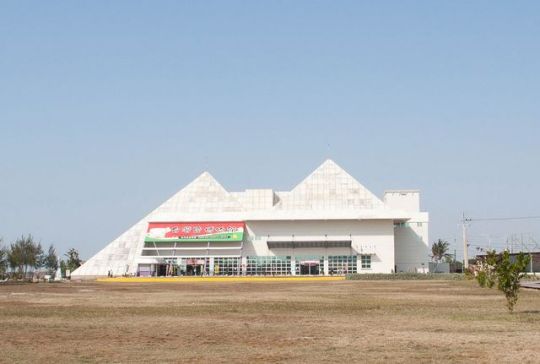#Qigu
Link
孤寂之美!在一片遼闊的海岸砂丘之中,眺望著絕美藍海與感受風和沙譜出的孤寂協奏曲的「頂頭額沙洲」!
#巡日#臺灣#旅行#日本味#海邊#沙洲#砂丘#沙丘#臺灣極西點#頂頭額沙洲#七股#臺南#和風臺灣#巡日旅行攝#Taiwan#Travel#Sandbank#Dintouer#Cigu#Qigu#Tainan#Wafu Taiwan#RoundtripJp
1 note
·
View note
Text






#yang chun icons
please like or reblog if you save !!
#gg icons#cpop idols#gg packs#ggs icons#gg layouts#cpop#cpop icons#cgirlsbook#qigu trainees#yang chun#gg details#lq ggs#cpop packs#cpop aesthetic#cpop bios#cpop girls
243 notes
·
View notes
Photo


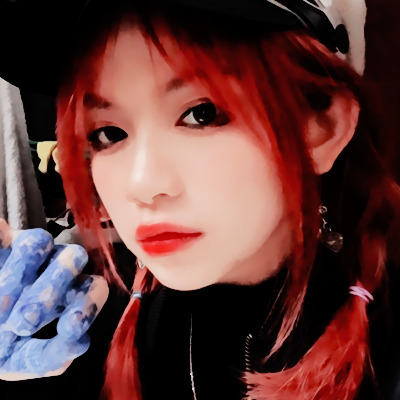





… 🌪 / qctrainee · yangchun — icons * please ♡ or reblog if you use !
#qigu culture trainee icons#yangchun icons#cpop icons#cpop#yangchun#yangchun qigu culture#qiyu girls#yang chun#yang chun icons#qiyu girls icons#chinese icons#chinese girl
24 notes
·
View notes
Photo


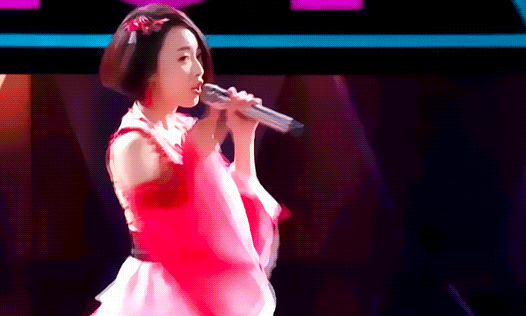



SING’s Performance
for @innocentrogue ♡
#SING#Lai Meiyun#Jiang Shen#Xu Shiyin#produce 101 China#Qigu Culture#S.i.n.g#pd101china#pd101c#*GM#*M#these gifs are so nice??#They still need improvement but#it's getting there :D#Also I can't tag the person???
52 notes
·
View notes
Photo
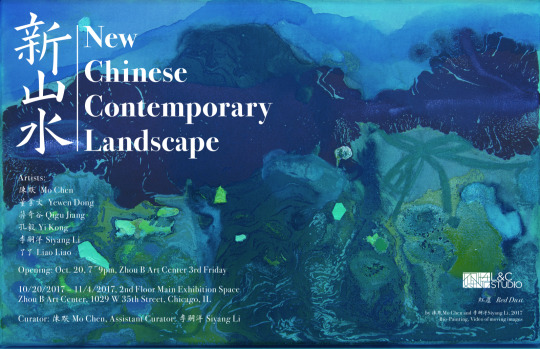

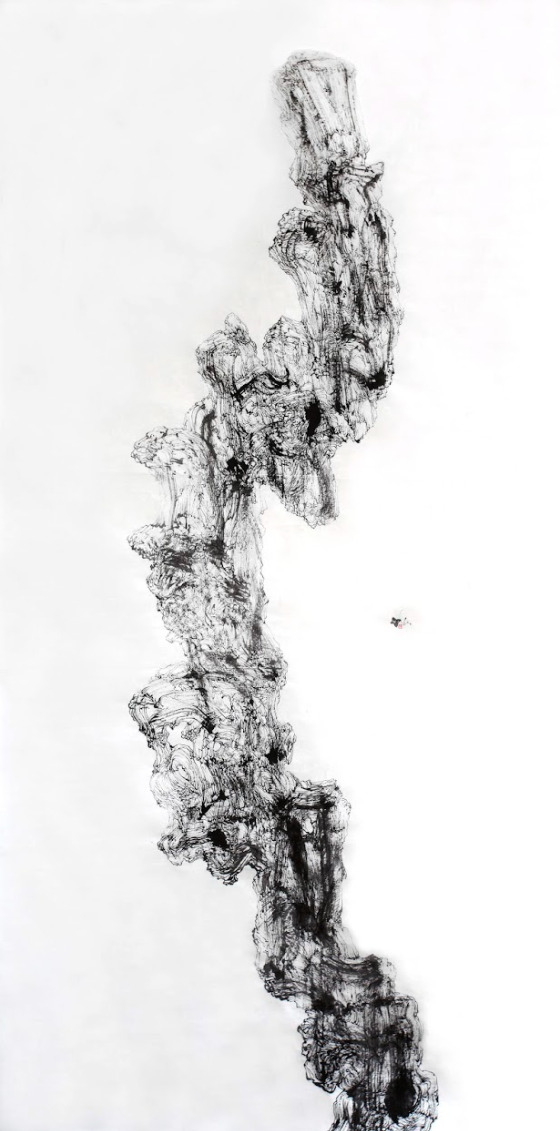




New Chinese Contemporary Landscape
Zhou B Art Center, Chicago, 2017
Curator: Mo Chen & Siyang Li
Artist: Mo Chen, Yewen Dong, Qigu Jiang, Yi Kong, Siyang Li, and Liao Liao
Zhou B Art Center gladly presents “新山水 New Chinese Contemporary Landscape”, a group exhibition curated by Mo Chen and Siyang Li that features several Chinese artists whose works take on the subject of landscape “山水” (“Shan Shui”, literally means “mountain and water”) in a variety of mediums.
Human and nature are one. The mood of mountains and water is also reflected in the human spirit. Thus Landscape Painting (山水 画) is regarded as the highest form of Chinese Ink Painting (水墨画). By depicting imaginary/observational scenes of “mountain” and “water”, it represents a symbolic space for the Chinese literati spirit to reside.
The innovation of New Chinese Contemporary Landscape is to treat the subject as a cultural concept associated with historical and humanity and to treat the form as a symbol instead of stereotyping it with traditional medium specificity. Then we can reinterpret the Chinese Landscape with an international aesthetic by thinking about the subject in the contemporary age.
https://www.chicagotribune.com/entertainment/ct-ent-see-it-now-1026-20171024-story.html
3 notes
·
View notes
Text
The Nine Orchestra of Emperor Yang of Sui
[From Suishu 15]
Reaching the middle of Daye [605 – 618], Emperor Yang therefore settled the Pure Music, Western Liang, Quici, Tianzhu, Kangguo, Shule, Anguo, Gaoli, Conclusion of Rites, using them as the Nine Sections [of Music]. The musical instruments and workers' clothes [?] establishing and construction had been completed, greatly perfected at this time.
[Western Liang governed the Hexi corridor late in the Sixteen Kingdoms era.
Quici is the modern Kucha, a city state in the Tarim Basin.
Kangguo, (the State of Kang), is old Sogdia.
Tianzhu is (north-west) India.
Shule is modern Kashgar, another state in the Tarim Basin.
Anguo (the state of An) should be Persia (Anxi).
Gaoli, I believe is Goryeo in northern Korea, but it is not presented very clearly.]
Pure Music, its beginnings precisely were the Three Tunes of the Pure Shang note [?, 清商三調]. Both Han came from the old tones. The appearance of the musical instruments are regulated, and also the song compositions are in ancient expression. They and those made by the Three Founders of Wei all are in the historical records.
During the Jin court's moves and dispersal, the Yi and Jie stole possession, its tones were divided and scattered. When Fu Yonggu pacified the Zhang clan, he began in Liang province to obtain it. Wu of Song pacified Guanzhong, and because of that it entered the south, and did not return to be in the interior lands.
When [the Sui] pacified Chen [they] afterwards received it. Gaozu heard it, and was pleased with its measured beat, saying:
This is the proper sound of the Huaxia. Formerly because of Yongjia it drifted to outside the Jiang. I received Heaven's enlightened instructions, and now again assembles it together.
Even though appreciating the moves of successive times, yet the ancients caused similarly to be [?]. [We] can use this as the original, small changes impair the advantage, removing its lamenting hatreds, examine and restore it. Use the newly settled pitch-pipes, change building the musical instruments.
Its singing tune is the Sunlit Companion, the dancing tunes are the Enlightened Lord and Equal Pact.
Its musical instruments are the zhong鐘 bell, the qing 磬 stone chime, the qin 琴 zither, the se瑟 zither, the jiqin擊琴 striking zither, the pipa 琵琶 lute, the konghou 箜篌 harp, the zhu 築 zither, the jiegu 節鼓 measuring drum, the sheng笙 reed organ, the di笛 flute, the xiao簫 pan pipe, the chi篪 flute, the xun 塤 ocarina, 15 kinds, being one section. 25 workers.
Western Liang emerged from the end of the Fu clan. Lü Guang, Juqu Mengxun and others occupied Liang province. They altered the sound of Qiuci, titling it as the performance of Qin and Han. When Taiwu of Wei had pacified West of the He he obtained it, speaking of it as the Music of Western Liang. Reaching the juncture of Wei and Zhou, they thereupon spoke of it as State Performance.
Now the followers of the bent-necked pipa曲項琵琶 lute and the angled-necked konghou豎頭箜篌 harp both emerged from the Western Regions, they are not old instruments of the Huaxia. The categories of New Sounds of the Willow Marsh and Godly White Horse were born among the Hu Rong. The Hu Rong sing not in the lost tunes of Han and Wei, for that reason the sound of their musical instruments change, and are truly not similar to the books and histories.
Its singing tune is the Perpetual Generations Music, the release [?] tune is the Abundance of Ten thousand Generations dance. The tune is the Yutian Buddha Tune.
[Yutian is the kingdom of Khotan, modern Hotan in the Tarim Basin.]
Its musical instruments are the zhong鐘 bell, the qing 磬 stone chime, the tanzheng 彈箏 plucked zither, the chouzheng 搊箏 plucked zither, the wokonghou 臥箜篌 arched harp, shutoukonghou豎頭箜篌 angled-necked harp, the pipa 琵琶 lute, wuxian 五弦 five strings lute, the sheng笙 reed organ, the xiao簫 pan pipe, the da bili 大篳篥 great reed-whistle, the changdi 長笛 long flute, the xiao bili 小篳篥 small reed-whistle, the hengdi橫笛 transverse flute, the yaogu 腰鼓 waist drum, the qigu 齊鼓 navel [?] drum, the dangu 擔鼓 carried drum, the tongba 銅拔 cymbals, the bei貝 shell horn, 19 kinds, being one section. 27 workers.
Quici, comes from Lü Guang wiping out Quici, following that he obtained their sounds. The Lü clan perished, and their music divided and dispersed. Later Wei pacified the Central Plains, and then acquired it. Its sound later had many changes and alterations. Reaching the Sui, there were the Quici of the Western States[s]' Quici, the Quici of the Qi Court, and the Earthen [?] Quici kinds, altogether three divisions.
[Lü Guang conquered Quici in 384, and later founded the state of Later Liang.]
In the middle of Kaihuang [581 – 600], its instruments were greatly abundant in the alley gates [?]. At the time there were Cao Miaoda, Wang Changtong, Li Shiheng, Guo Jinle, An Jingui and others, all marvellously superb with pipes and strings. The new sounds were singularly changeable, at dawn changing and at dusk altering. They grasped their skill with tones, selling and haggling among excellencies and kings. They were lifted up at the time to strive with each other longing for supremacy.
Gaozu was concerned about it, and spoke to the crowd of subjects, saying:
[I] have heard the excellencies are all fond of the new alterations, and are memorialising without restoring the correct sounds. This is of great inauspiciousness. Families themselves shape the state. To change the manners of the perfect man cannot be said to be the methods of Under Heaven. The excellencies' families [are] the families from where [we] have manners and customs! [?] Living or perishing, good or bad, [they] cannot but be connected to them. Music moves people's depth, in affairs providing harmony and elegance [?], excellencies and others responding to friends and guests with feasts [?], [we] ought when memorialising to have proper sound. [If] the sound is not correct, how can we make men and women hear!
The Emperor, though he had this edict, was yet in the end unable to help it. Emperor Yang did not resolve the tone regulations, and in general did not concern [himself] or care [about it]. Later the great regulations' gorgeous chapters explained the extremely excessive lace-work [?].
Now the music is properly simple, clear and insightful to make the new sounds [?], establishing the Ten thousand Years Music, [For?] Seven Evenings Meeting Each other Music[?], Pitch-Pot Music, Dancers and Seated with the Same Heart and Topknot, Jade Woman Moves the Cup, Divine Immortal Detains Traveller, Throw Bricks and Continue Life, Fighting for Chicken Eggs, Fighting for a Hundred Straws, Sailing the Dragon Ship, Returning to the Old Palace, Enduring Music Blossoms, and the Twelve Seasons tunes, hiding and holding back, pushing aside and covering over, the sorrowful tones broken off and cut short.
The Emperor was pleased with it without end, he spoke to the favoured subjects, saying:
Those who often pluck tones are like people who often read books. Read books books often and you are able to compose books. Pluck tones often and you are able make tones. This is the reason it is so.
Because of that a saying clearly and wisely [?] stated:
The Qi clan were swept into a corner, Cao Mingda was as if he enfoeffed himself king. We now greatly united Under Heaven, in desiring to value you [?], ought to cultivate prudence.
6th Year [of Kaihuang?, 586 AD], Gaochang presented the Sagely Clarity Music tune. The Emperor ordered those knowledgable in tones to listen to it in the guest house, return back and learn and practice [it]. When the travellers were just about to present it, they first in front [of them] memorialised it. The Hu Yi all were surprised by it. Its singing tune is Good, Good Mani [Buddhist jewel of truth]. The release tune is Bhaga's Son [?, 婆伽婆 MC Bagwaba, Sanskrit Bhagawan, is one of Buddha's epithets]. The dancing tune is the Lesser Heaven. There also is the Shule Salt.
[Gaochang was a city state in the Tarim basin. The Salt Tune is also mentioned under the Shule heading below.]
Its musical instruments are the shukonghou豎箜篌 angled-necked harp, the pipa 琵琶 lute, wuxian 五弦 five strings lute, the sheng笙 reed organ, the di笛 flute, the xiao簫 pan pipe, the bili 篳篥 reed-whistle, the maoyuan gu 毛員鼓 hairy round [?] drum, the dutan gu 都曇鼓 drum, the dala gu 答臘鼓 drum, the yaogu 腰鼓 waist drum, jiegu 羯鼓 wether drum, the jilou gu 雞婁鼓 drum, the tongba 銅拔 cymbals, the bei貝 shell horn, 15 kinds, being one section. 20 workers.
Tianzhu comes from Zhang Chonghua took possesion of Liang province. Zhong's [?] four translators came to offer male performers [?]. Tianzhu was precisely their music. The singing tune is the Boundary of Pebbles and Rocks, the dancing tune is the Heavenly Tunes. Its musical instruments are the fengshou konghou鳳首箜篌 “phoenix head” harp, the pipa 琵琶 lute, wuxian 五弦 five strings lute, the di笛 flute, the tonggu 銅鼓 copper drum, the maoyuan gu 毛員鼓 hairy round [?] drum, the dutan gu 都曇鼓 drum, the tongba 銅拔 cymbals, the bei貝 shell horn, 9 kinds, being one section. 12 workers.
Kangguo comes from Emperor Wu of Zhou's concubine [from the?] Northern Di becoming Empress [?], obtaining the Western Rong performers acquired by her, following that their sounds. The singing tune is Store in the Hall, Farming Harmoniously and Proper. The dancing tunes are the Present the Thoroughwort Alms-bowl Nose First [?], the Finally Why Waves and Earth [?], Farming Favours the Alms-bowl Nose First [?], and the Before Pulling up the Earth Favour the Earth [?], four tunes. Its musical instruments are the di笛 flute, the zhenggu 正鼓 proper drum, the jiagu 加鼓 added drum [?], and the tongba 銅拔 cymbals, 4 kinds, being one section. 7 Workers.
Shule, Anguo, and Gaoli, all come from Later Wei pacifying the Feng clan and communicating with the Western Regions, and following that obtained their performers. Later [it became?] gradually difficult to join together their sounds [?], [they are?] accordingly separate in the great music.
Shule, the singing tune the Haughty and Sharp Die and Yield Music, the dancing tuns is the Distant Submission, the release tune is the Salt Tune. Its musical instruments are the shukonghou豎箜篌 angled-necked harp, the pipa 琵琶 lute, wuxian 五弦 five strings lute, the di笛 flute, the xiao簫 pan pipe, the bili 篳篥 reed-whistle, the dala gu 答臘鼓 drum, the yaogu 腰鼓 waist drum, the jiegu 羯鼓 wether drum, and the jilou gu 雞婁鼓 drum, 10 kinds, being one section. 12 workers.
Anguo, the singing tune is the Season of the Bodhisattva [?], the dancing tuns is the Final Why, the release tune is the Sitting in Harmony and Reverence. Its musical instruments are the konghou箜篌 harp, the pipa 琵琶 lute, wuxian 五弦 five strings lute, the di笛 flute, the xiao簫 pan pipe, the bili 篳篥 reed-whistle, shuang bili 雙篳篥 paired reed-whistle, the zhenggu 正鼓 proper drum, hegu 和鼓 harmonious drum, and the tongba 銅拔 cymbals, 10 kinds, being one section. 12 workers.
Gaoli, the singing tune is the Mushrooms Nestle, the dancing tune is the Sing the Mushrooms Nestle. Its musical instruments are the tanzheng 彈箏 plucked zither, wokonghou 臥箜篌 arched harp, the shukonghou豎箜篌 angled-necked harp, the pipa 琵琶 lute, wuxian 五弦 five strings lute, the di笛 flute, the sheng笙 reed organ, the xiao簫 pan pipe, the taopi bili 篳篥 peach-skin reed-whistle, the yaogu 腰鼓 waist drum, qigu 齊鼓 navel drum, the dangu 擔鼓 carried drum, and the bei貝 shell horn, 14 kinds, being one section. 18 workers.
Rites Concluded originally came from the family of Jin's Grand Commandant Yu Liang. Liang passed away. His performers retrospectively thought of Liang, and because of that made use of [him] as their face, carrying screens when dancing, with images of his appearance. They took his posthumous title as the title for it, speaking of it as Civil and Prosperous Music. Always when memorialising, at the end of the nine section's music, they then exhibited it. For that reason [they] used Rites Concluded as the name. Its marching tune is Single Crossroad, the dancing tune is Scattered Blossoms. Its musical instruments are the di笛 flute, the sheng笙 reed organ, the xiao簫 pan pipe, the chi篪 flute, the lingpan 鈴槃 jingle-bell tray [?], the bing鞞 large drum, the yaogu 腰鼓 waist drum and others, 7 kinds, 3 pitches [?], being one section. 22 workers.
1 note
·
View note
Text
pd101 ranks
as of 26th of may (according to this post)
Yuehua Entertainment- Wu XuanYi
Real Show- Abby
Real Show- Cindy
Comic LingYu Media- Sunnee
Oriental Awakening Agency- Li ZiXuan
JC Universe Entertainment- Yamy
Dragon Dance- Duan AoJuan
QiGu Culture- Lai MeiYun
Comic LingYu Media- Zhao YaoKe
Yuehua Entertainment- Meng MeiQi
Banana Culture- Qiang DongYue
#im gonna shed a tear theyre so powerful#produce 101#produce 101 china#produce101 china#produce101china#produce101 yamy
10 notes
·
View notes
Text
TAINAN-Taiwan -Qigu Salt Mountain 七股盐山 - 724, Taiwan, Tainan City, Qigu District, 鹽埕里66號
TAINAN-Taiwan -Qigu Salt Mountain 七股盐山 – 724, Taiwan, Tainan City, Qigu District, 鹽埕里66號
We Take Train From Gao Xiong to Tainan HSR Train
When we Reach Tainan, then go check in after that take Tainan bus to Qigu Salt Mountain (七股盐场)
Seriously what is this haha?
arriving Destination
Its all about Salt Lets Selfie
Overall go to Tainan is most challenging time, because we want to save money, so decide take bus going up, and its take 1hour plus to reach this place, that time I…

View On WordPress
0 notes
Text
Qingkuan fan-shaped salt fields
New Post has been published on https://hagemann.one/index.php/2020/05/02/qingkuan-fan-shaped-salt-fields/
Qingkuan fan-shaped salt fields

var div = document.getElementById('dtcontainer_1'); var PSV = new PhotoSphereViewer( panorama: 'https://hagemann.one/blog/wp-content/uploads/2020/05/DJI_0327-scaled.jpg', container: div, default_position: long: 0/60, time_anim: 1000, navbar: true, allow_scroll_to_zoom: true, zoom_level: 0, anim_speed: '2rpm', navbar_style: backgroundColor: 'rgba(58, 67, 77, 0.7)' , );
Qingkuan fan-shaped salt fields 青鯤鯓扇形鹽田, Qigu District, Tainan City, Taiwan [23.19199096, 120.09123491]
0 notes
Photo




Monday (part 2): Qigu Salt mountain where i take a nap Night market in Kaosiung and cj enjoys a very delicious roll
1 note
·
View note
Photo

-Sunset Cloulds-
Yancheng, Qigu Dist., Tainan City 724, Taiwan (R.O.C.)
2 notes
·
View notes
Video
180408 Produce 101 Official Weibo Update
QiGu Culture (SING) Girls Introduction Video
5 notes
·
View notes
Photo

In 1978, a set of chimes was unearthed from the tomb of zeng houyi in qigu dun, hubei province, and many glass beads were also unearthed. #abrasivestocks #refractory #abrasive #abrasives #lapping #polishing #supplier #blasting #ciated #bonded (在 Zhengzhou) https://www.instagram.com/p/BnkZFavhn4T/?utm_source=ig_tumblr_share&igshid=4b1vws4sp7pu
0 notes
Text
Chuyến du lịch Đài Nam Đài Loan có gì hấp dẫn du khách?
Đài Nam Đài Loan là một trong những điểm đến mà hầu hết ai cũng đều muốn ghé thăm và không thể bỏ qua khi đến du lịch Đài Loan. Ở đây có điều gì thú vị đến vậy, cùng lên lịch chuyến khám phá cảnh đẹp ở những góc phố và những món ăn hấp dẫn không thể quên.
[caption id="attachment_86570" align="aligncenter" width="640"] Khung cảnh đường phố Đài Nam (Ảnh: ST)[/caption]
Nên đi Đài nam mùa nào?
Theo kinh nghiệm du lịch Đai Nam mà nhiều bạn chia sẻ về thời điểm hoàn hảo nhất để lên lịch chuyến du lịch Đài Nam Đài Loan đó là mùa xuân và mùa thu. Vào mùa xuân (từ tháng 3 đến tháng 4) du khách có thể tận hưởng không khí mát mẻ, phong cảnh thành phố đẹp và cũng là thời điểm diễn ta Tết cổ truyền, lễ hội mùa xuân,...
[caption id="attachment_86569" align="aligncenter" width="640"] Tận hưởng không khí mùa xuân mát mẻ ở Đài Nam (Ảnh: ST)[/caption]
Còn với mùa thu (từ tháng 9 đến tháng 11), du khách sẽ cảm nhận thấy thời tiết ở Đài Nam Đài Loan khô ráo, mát mẻ hơn nên rất thích hợp để du khách cũng như cả người dân ở đây tham quan ngắm cảnh sắc đỏ của những cây phong.
[caption id="attachment_86587" align="aligncenter" width="640"] Đài Nam Đài Loan mùa thu lãng mạn (Ảnh: ST)[/caption]
Phương tiện di chuyển ở Đài Nam Đài Loan
Ở thành phố Đài Nam Đài Loan, phương tiện chủ yếu là xe bus được dùng khá nhiều, tiện lợi, liên tục phù hợp với việc di chuyển trên những con phố nhỏ của Đài Nam. Với hai hệ thống xe bus là City Bus chuyên phục vụ người dân gồm 6 line chính (blue, green, brown, orange, yellow, red) và 2 line chuyên phục vụ khách du lịch Đài Nam là xe bus 88 và xe bus 99.
[caption id="attachment_86551" align="aligncenter" width="640"] Phương tiện di chuyển bằng xe bus (Ảnh: ST)[/caption]
Du khách nước ngoài đến Đài Nam muốn thăm quan các địa điểm thì có thể lựa chọn 2 tuyến bus này để có lịch trình tham quan trọn vẹn nhất.
[caption id="attachment_86573" align="aligncenter" width="640"] Ảnh: ST[/caption]
Đi đâu chơi ở Đài Nam Đài Loan?
Đến Đài Nam mọi người chủ yếu tham quan các khu phố cổ bởi đây được xem là những nét đặc trưng văn hóa của thành phố này. Bên cạnh đó, du khách còn có thể tham quan thêm những khu du lịch sinh thái thích hợp cho các kiểu dã ngoại cùng với gia đình dịp cuối tuần. Với những du khách đến từ nước ngoài có thể nghỉ ngơi tại các khách sạn Đài Nam để tiện di chuyển cho việc thăm quan, khám phá các địa điểm nổi tiếng ở đây.
[caption id="attachment_86574" align="aligncenter" width="640"] Những góc phố ở Đài Nam (Ảnh: ST)[/caption]
Phố cổ Tainan
Đài Nam Đài Loan là một trong nhưng nơi có những góc phố cũ theo thời gian mang đến sức quyến rũ rất lớn đối với du khách trong và ngoài nước. Đài Nam là một trong những thành phố phát triển sớm nhất ở Đài Loan và tại đây bạn sẽ cảm nhận được một Đài Loan rất lãng mạn. Ở đây bạn có thể bắt gặp rất nhiều những con phố cổ, những ngôi nhà trăm năm tuổi và cả thành phố mang đậm hơi hướng vintage, vẻ hoài cổ và không gian bình yên.
[caption id="attachment_86550" align="aligncenter" width="640"] Khu phố cổ Tainan ở Đài Nam về đêm (Ảnh: ST)[/caption]
Phố cổ Anping Old Street
Đây là một tổ hợp lớn các khu di tích, khu nhà cổ và chợ đêm. Còn với đường cổ Anping khá hẹp nhưng thoáng gió, dọc hai bên đường là những căn nhà gạch cao còn giữ được đến ngày nay, trải qua theo năm tháng lịch sử.
[caption id="attachment_86552" align="aligncenter" width="640"] Đường cổ Anping nổi tiếng (Ảnh: ST)[/caption]
Thêm nữa, du khách còn có thể thưởng thức các món đặc sản địa phương như các loại trái cây, kẹo đậu phộng. lạp xưởng,...Hay còn có thể mua những món quà lưu niệm cho gia đình, bạn bè như búp be vải, búp bê gỗ,...
[caption id="attachment_86553" align="aligncenter" width="640"] Thưởng thức các món đặc sản trên đường phố (Ảnh: ST)[/caption]
Anping Fort
Nơi đây được biết đến là một pháo đài được người Hà Lan xây dựng từ thế kỉ 17, mang nhiều giá trị lịch sử. Bên trong pháo đài có một bảo tàng nhỏ để trưng bày các hiện vật và thông tin của đồn.
[caption id="attachment_86556" align="aligncenter" width="640"] Pháo đài Anping Fort (Ảnh: ST)[/caption]
Trong khuôn viên có tượng Trịnh Thành Công, một vị tướng tài ba của của Trung Quốc giành lại Đài Nam từ tay người Hà Lan.
[caption id="attachment_86558" align="aligncenter" width="640"] Khuôn viên của pháo đài (Ảnh: ST)[/caption]
Anping Tree House
Nơi này khá giống với một khu vườn, du khách có thể đến đây dể hít thở không khí trong lành của Đài Nam và chiêm ngưỡng kiến trúc của ngôi nhà trong cây. Ngôi nhà là một kho cũ của một nhà máy, các nhánh cây bám chặt và bao kín các mảng tường . Đây là một điểm đến khá thú vị để mọi người có thể đến tham quan.
[caption id="attachment_86598" align="aligncenter" width="640"] Một trong những địa điểm tham quan nổi tiếng ở Đài Nam (Ảnh: ST)[/caption]
Đền Khổng Tử
Nếu muốn tìm hiểu lịch sử Đài Loan thì bạn nên đến Đền Khổng Tử, được xây vào thế kỷ 17 và đến nay vẫn được giữ gìn khá nguyên vẹn. Ngôi đền này mang không gian yên bình và đầy tôn nghiêm. Trong Đền có nơi giảng đạo của các bậc hiền sư ngày xưa, và nơi đặt bài vị của Khổng Tử cùng các hiền đệ.
[caption id="attachment_86602" align="aligncenter" width="640"] Đền Khổng Tử Đài Nam (Ảnh: ST)[/caption]
Bảo tàng Chi Mei
Khu bảo tàng Chin Mei được thiết kế theo phong cách Châu Âu, du khách thường đến đây vào buổi tối để có thể ngắm nhìn vẻ đẹp bảo tàng khi lên đèn. Bạn có thể thăm quan bảo tàng từ 9h30 đến 17h30 các ngày trong tuần trừ thứ hai.
[caption id="attachment_86605" align="aligncenter" width="640"] Bảo tàng Chi Mei kiến trúc độc đáo (Ảnh: ST)[/caption]
Đây là điểm đến mà du khách không nên bỏ lỡ khi đến du lịch Đài Nam Đài Loan, bởi nơi đây trưng bày các tác phẩm nghệ thuật có giá trị cao từ lịch sử loài người, các cuộc chiến tranh, tác phẩm nghệ thuật,...
Kênh Sicao
Hai bên bơ kênh Sicao được trồng rất nhiều cây xanh tạo thành một mái vòm kín xanh, du khách đến đây có thể đến đây cảm nhận không khí trong lành, mát mẻ. Ngoài ra, với trải nghiệm ngồi thuyền trôi theo dòng nước đem đến cho bạn cảm giác bình yên và thư giãn.
[caption id="attachment_86559" align="aligncenter" width="640"] Kênh Sicao tuyệt đẹp ở Đài Nam (Ảnh: ST)[/caption]
Núi Qigu Salt
[caption id="attachment_86560" align="aligncenter" width="640"] Núi Qigu Salt thu hút nhiều du khách ghé thăm (Ảnh: ST)[/caption]
Ngọn núi Qigu Salt này đem đến lượng muối chính cung cấp cho Đài Loan, toàn bộ núi đều được phủ một lớp muối trắng. Điều đặc biệt ở đây đó chính là núi được thiết kế thành bậc thang. Còn chần chừ gì mà không chinh phục đỉnh của ngọn núi này!
[caption id="attachment_86562" align="aligncenter" width="641"] Ảnh: ST[/caption]
Ẩm thực Đài Nam Đài Loan có gì đặc sắc?
Không chỉ có những cảnh đẹp và không gian thư giãn, Đài Nam còn đem đến một thiên đường ẩm thực phong phú phục vụ, giúp du khách trải nghiệm những nét đặc trưng truyền thống của con người phía nam Đài Loan.
[caption id="attachment_86564" align="aligncenter" width="640"] Ẩm thực Đài Nam Đài Loan phong phú (Ảnh: ST)[/caption]
Các món ăn nổi tiếng mà nhất định bạn phải thử khi đến Đài Nam đó chính là Mỳ Danzai, bánh gạo Wa gui, tào phớ, cá măng, bánh mì quan tài, Lu Mian (mì om),...
[caption id="attachment_86567" align="aligncenter" width="640"] Những món ăn được nhiều người yêu thích ở Đài Nam (Ảnh: ST)[/caption]
Đài Nam Đài Loan - cố đô của Đài Loan xưa với văn hóa lâu đời với những khu phố cổ xưa, khí hậu mát mẻ, ẩm thực đặc sắc, điểm tham quan hấp dẫn chắc chắn sẽ làm say lòng du khách khi đến với Đài Nam để tham quan, nghỉ dưỡng bình dị và tìm hiểu những nét truyền thống cổ.
Xem thêm bài viết:
Đi Đài Loan mua gì - 14 món ăn đặc sản Đài Loan làm quà nổi tiếng
Gợi ý mua sắm ở Đài Loan bổ ích cho chuyến du lịch ngắn ngày
15 Địa điểm du lịch Đài Loan "siêu hot" không nên bỏ lỡ
0 notes
Video
Travel Light in Kaohsiung 高雄輕旅行(2017/06/27~2017/06/30)D3-10: Route QiGu 旗鼓航線【Cijin 旗津 → Gushan 鼓山】- 14:18 June 29, 2017(在 鼓山輪渡站)
0 notes
